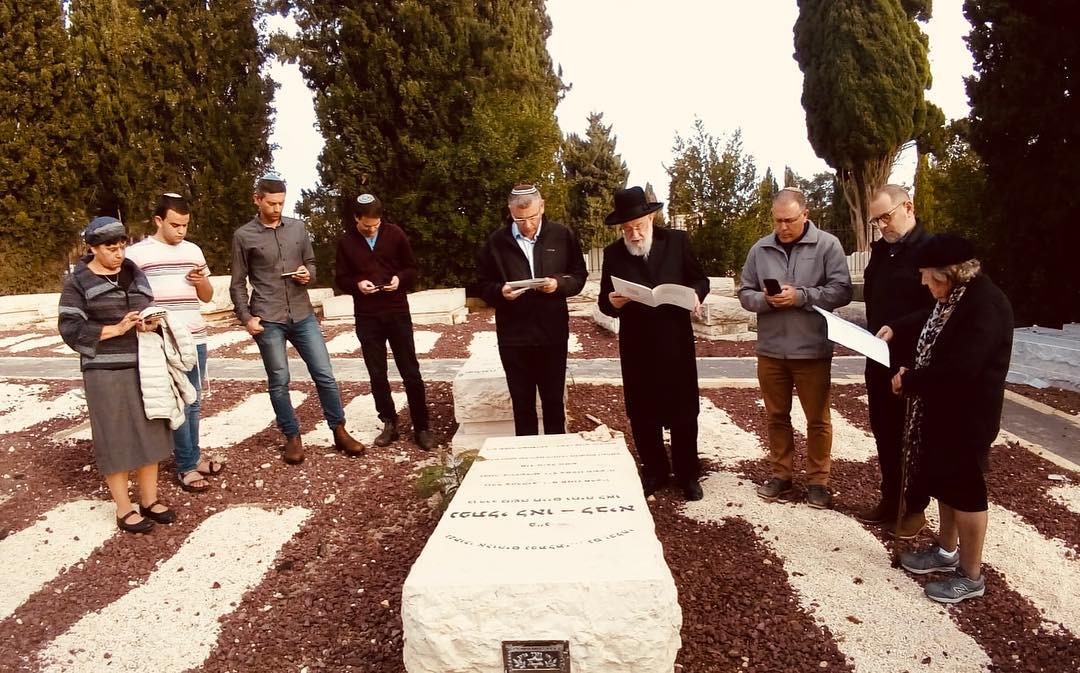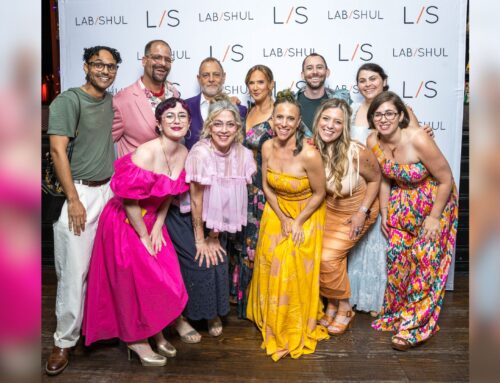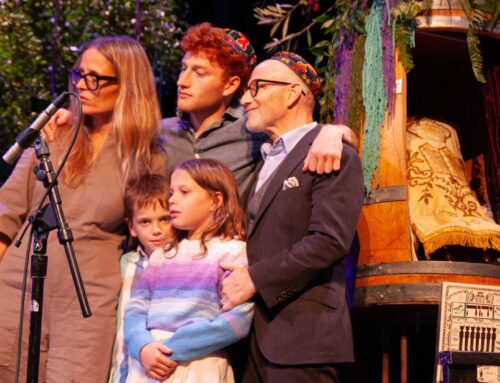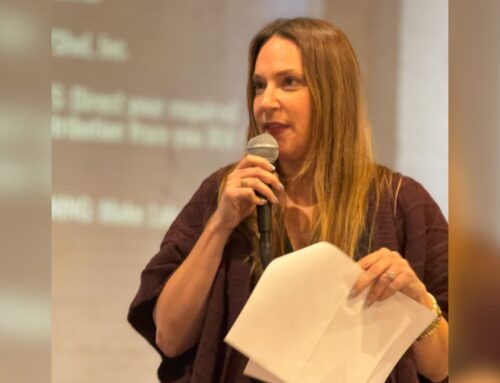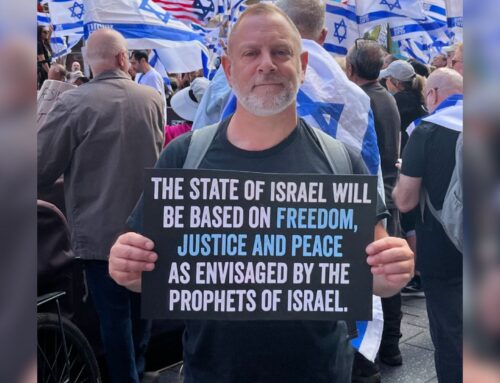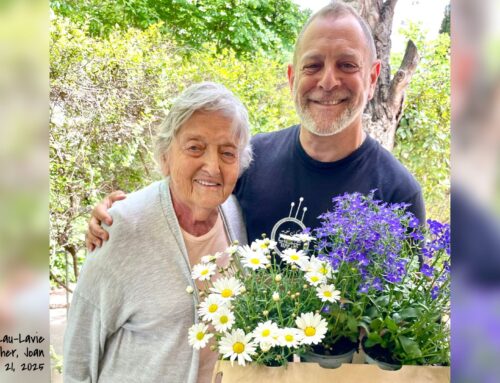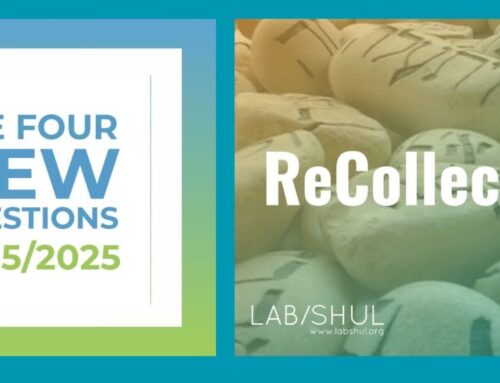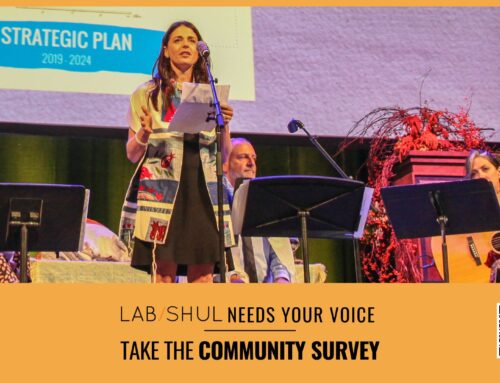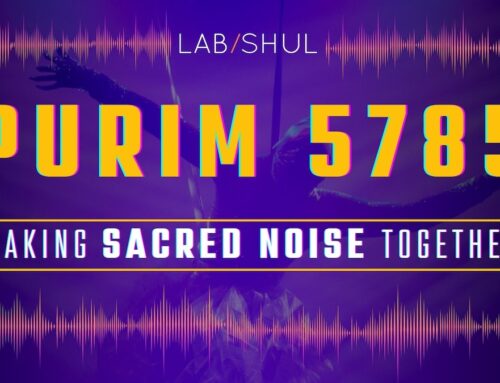12/12/19 14 Kislev 5780
A Kosher Kaddish?
My father died on this full moon, five years ago. As I sat Shiva with my family in Jerusalem, many from the Lab/Shul family in NYC joined me one afternoon, on a conference call, to comfort, share condolences and recite the Kaddish together. That was our first “Virtual Kaddish” – and it has been going on, a collective virtual ritual of grief and growth, once weekly, non stop, for the past five years.
Who would have thought back then that this improvised gesture of consolation would become one of our most intriguing and ongoing arenas for exploring what religious reality may look like in the digital age.
I think my father would have appreciated this impressive and creative communal commitment to continuity. He, an observant Orthdox Jew, would likely also have had some questions about the validity of this modern take on a traditional rite. Would this Virtual Kaddish be considered Kosher in his eyes? Our “everybody friendly” policy invites all people to participate in this historically Jewish-men-only space. Can an intimate in-person ritual be meaningfully adapted to a global phone-in experience? I wish he was around for this discussion.
But we are here – and this five year marker is a good place to pause in appreciation and gratitude for all in our community who keep showing up to keep this Kaddish going. It is also an opportunity to ponder those questions, to reflect on this experiment that tests the limits of spiritual connection in a digital and virtual reality.
In this short post I’d like to explore my father’s hypothetical questions (that have been asked by others these past few years), to offer a thought about the changing meaning of the concepts of “place” in the modern digital world, and to extend an invitation/request to friends in our community and beyond to join our weekly minyan– our group of 10– and help us keep this Kaddish going.
Makom: Place of Presence
Each Thursday at noon, for about 30 minutes, a group of us gathers in sacred virtual space, each in different locations worldwide, holding the memories of our loved ones. We share who we are, who we remember, what’s on our hearts, and then take a moment to breathe and recite the mourner’s prayer– all of us together in a messy, perfect, human chorus. Hundreds of mourners and friends in support, from literally all over the world, have joined these calls since 2014. Some just once, though many return.
I led each weekly Kaddish through the year of my father’s mourning, often in tears. When that year ended I was joined by other Lab/Shul ritual and community leaders, and we continue to lead this moving ritual in rotation. With additional losses in our community, we’ve learned how to better support each other, and how to hold this ritual space– each of us in our unique ways– offering mourners meaningful moments of connection, while also cultivating deeper bonds, both long distance and close by.
While the virtual connection may not be as helpful as an actual hug at times of hurt, we are aspiring, and for the most part succeeding, in translating this tribal local gathering of consolation into a larger global meet-up that nourishes our souls at times of need.
So how can this gorgeous gesture be considered “unkosher?” For the past two decades, as digital reality continues to impact our lives, there are more discussions and debates among clergy, theologians and community leaders regarding the halachic (legalistic) validity of virtual prayer space, including the recital of the Mourners’ Kaddish.
Traditional Jewish Law requires the physical presence of those engaged in communal prayer. The 16th Century authoritative legal text known as the Shulchan Aruch mandates that the Kaddish be recited only in the assembly of a minimum of ten people– who have to be Jewish, male, and at least 13 years old. They also have to be in “makom echad”– a singular place. Legalists have argued for generations over the meaning of this term and if it include, for instance, a person standing right outside the room where the others are assembled, or within earshot, but lacking visibility. What, in other words, does “place” mean?
As technology advances and our sense of “here and now” evolves with it, I feel confident that when we pay attention and bring intention into the digital space, using tools such as Zoom or FaceTime, we can adapt the concept of “place” to include trans-geographical options when necessary.
Based on the astonishing stories of people who’ve joined us on these calls, it’s clear that this is often a meaningful top priority, not a secondary choice– for reasons that include proximity, access, personal safety and actual emotional support.
So yes, I’d say to my father: In today’s world and the world of tomorrow– virtual space works as “makom”– and our gathering “location” can be sanctified as sacred sanctuary suspended in space. It’s on us to change the times and meet the needs and the people where and how we are.
But what about the need for a Minyan? Beyond the big questions of who counts in a Minyan these days, does it even matter?
Why Minyan Matters
Jewish law keeps evolving. In recent decades, even some fringe Orthodox communities began to include women in the required quorum of prayers. Change is faster elsewhere: in the liberal Jewish world this feminist choice has been practiced for well over a century. Lab/Shul is Everybody-Friendly– meaning all are welcome to be members and leaders in our community rituals, regardless of faith, gender, ethnic origin, race, sexual orientation or physical ability. We hold safe space for the fast-evolving, rich texture of 21st century Jewish and Jew-ish community. This applies to our Virtual Kaddish– all are welcome, no questions asked and no experience necessary.
But what about insisting on the minimal number of ten adults? And why?
We’ve gone back and forth on this one. During my year of reciting Kaddish for my father I mostly had no trouble standing with ten or more on the weekly call. As the call continued into year two and three, we sometimes had fewer than ten callers– but decided to recite the Kaddish anyway, honoring the efforts of those who did join and the loved ones we came to remember. There were several people who wanted to join the call but declined to do so without the assurance that we would adhere to the communal norms of Minyan.
As social norms and Jewish law keep evolving, so do our communal customs. A year ago, following an intense and compelling conversation with a mourner in our community– a dear friend who was hesitant to join the call unless there were nine others on it– I began to question our decision and to explore options for making sure we stick to at least one of the original rules: Recitation of the prayer in the presence of ten adults.
While the number ten is almost arbitrary, chosen by Talmudic sages based on Roman legal precedents as well as obscure scriptural stipulations– it is the accepted number for what constitutes community.
To be part of a Minyan is to be part of a public– to exist not in personal private space, but to be accountable to and part of the bigger picture.
There is power in Minyan. We are held, sometimes at our most vulnerable moments, by the presence of others. When it’s our turn, we rise up to stand with them. In so many ways– religious life exists to support our human isolation, to connect us deeper to our inner selves, to each other, to what matters most. Some traditions walk this talk in powerful ways. That’s why Minyan matters. That’s why it matters as much online as it does in person.
Most of the time we do get a Minyan on the weekly call. But on some days, just as in brick and mortar synagogues of all denominations– it’s eight or nine of us.
As our community grows and takes more responsibility for each other and for our ongoing needs, I hope that we will be able to show up as a minyan for each week’s Kaddish call– that ten or more of us will continue to prioritize communal participation
That’s where you come in.
What if each of us, reading this, part of this community in whatever way, committed to join the call 1-2 times a year? Maybe to mark important Yahrtzeits– the annual memorial of the passing of a loved one. Maybe choosing other personally significant dates
Maybe just because you are a part of this community and so are the mourners on each week’s call.
I invite you to join our Virtual Kaddish community however works best to you, and to keep the Kaddish going.
Click here to join our Google Group.
Click here to sign up to be a part of the minyan on a call (or two!) in 2020.
Click here to download our version of the Kaddish.
There’s much to explore here– I hope to devote more time and words to this issue, and to other paradoxes and fusions of digital and divine realities, as we continue to translate our legacies into the complicated lives we’re living now.
Please don’t hesitate to share feedback and thoughts with me.
May memories bring us blessings, and may we be here for each other, in so many ways, on this and other days, with tenderness, respect, and love.
Rabbi Amichai Lau-Lavie


